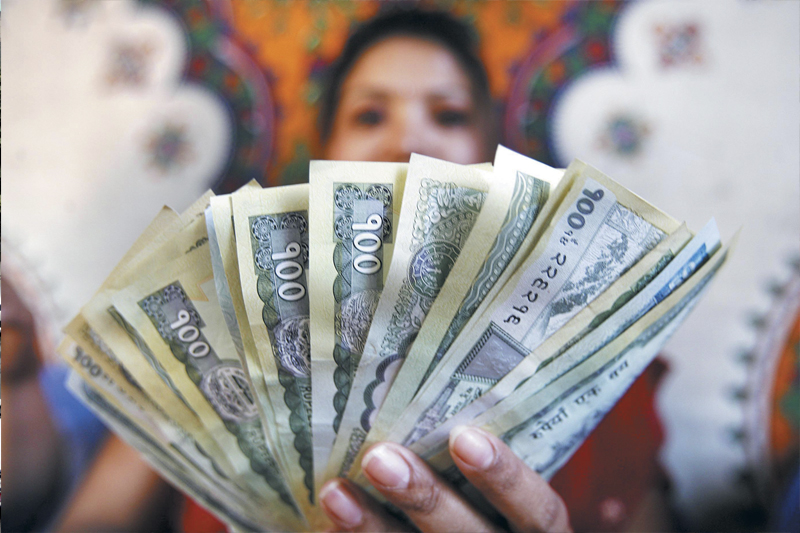Rupee hits fresh 27-month low of 107.60 vs US dollar
Kathmandu, December 14
Nepali currency has been losing ground against the US dollar since the beginning of this week, as Indian rupee, with which local currency is pegged, is continuously coming under pressure.
Nepali rupee opened for trading at 107.17 against the US dollar on Sunday and fell to 107.32 today. On Tuesday, the rupee will hit a new 27-month low of 107.60 against the US dollar, shows the reference rate of Nepal Rastra Bank, the central bank.
The last time the rupee had fallen to this level was on September 5, 2013, when exchange rate stood at 107.83.
Nepali rupee’s rise and fall depends on the movement of Indian currency as it is pegged to Indian rupee at 1.6.
Indian currency has lately been losing ground because of signs that the US Federal Reserve will raise benchmark interest rate for the first time since June 2006 during a meeting scheduled for December 15 to 16.
In early trade today, Indian rupee lost 21 paisa to slump to a fresh two-year low of 67.09 against the US dollar. Indian rupee recouped some of the losses later in the day and closed at 67.10.
“Sentiment is very bearish ahead of the Federal Reserve’s meeting this week,” Bloomberg quoted Rohan Lasrado, Mumbai-based head of foreign-exchange trading at RBL Bank Ltd, as saying. “It seems the Reserve Bank of India’s intent is to protect the 67-per-dollar level until the Fed event is out of the way.”
Many expect the US central bank to raise benchmark interest rates on Wednesday. “The probability of a 25 basis point rate hike is now 85 per cent,” the Financial Times quoted Trevor Charsley, currency manager of AFEX, a global payment and risk management solutions specialist, as saying.
The interest rate hike is expected to trigger outflow of dollar from emerging markets, including India, exerting pressure on domestic currencies. If Indian currency comes under pressure, value of Nepali rupee will further depreciate.
A weak currency actually benefits recipients of remittance here, as they will get more Nepali currency while exchanging money sent by Nepalis working abroad.
A weak currency also provides leverage to exporters, as foreign buyers will get more of local currency to purchase goods or services here while exchanging dollars.
But this theory does not always apply in Nepal where prolonged hours of power cuts and other structural problems work as disincentives for exporters. Hence, weak currency has not been able to give a lift to Nepali exports.
While there is little improvement on exports front, imports — except in the first three months of this fiscal — have continued to rise because of the nation’s status as ‘net importing country’.
This means a weak currency will only stoke inflation in a country like Nepal because importers will have to
pay more of domestic currency while purchasing foreign goods priced in US dollars.






